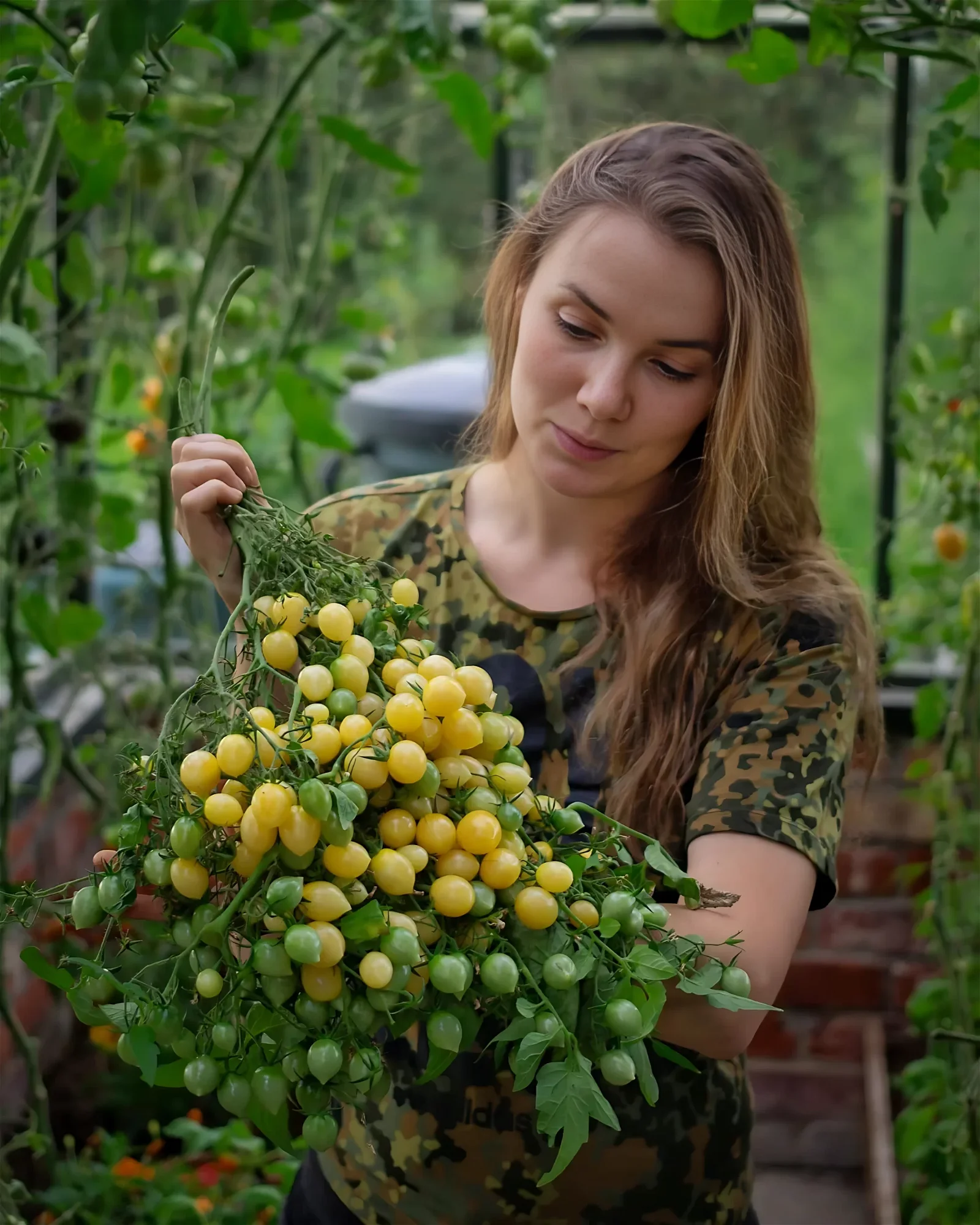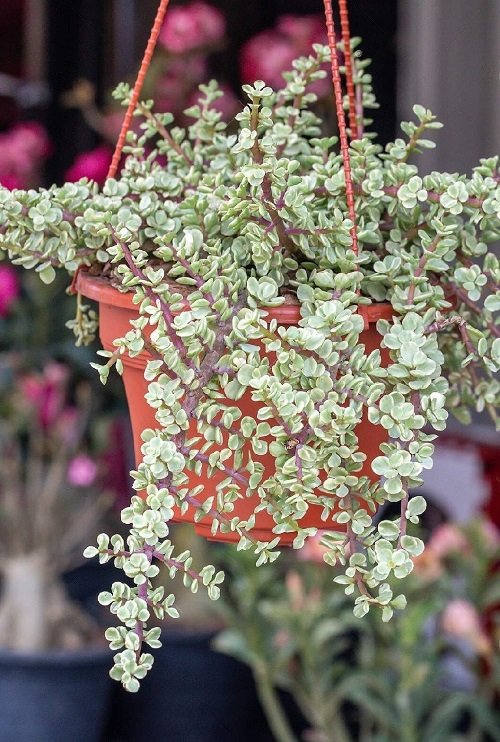Elephant Bush vs Jade Plant: Are you confused between the two, too? Don’t worry! This article will clear everything out!
When it comes to popular and beloved succulent species, the elephant bush and jade plant often find themselves in the spotlight of confusion! Let’s end this Elephant Bush vs Jade Plant debate once and for all!
Have a look at the best types of jade plants that flower here
Elephant Bush (Portulacaria afra)
- Origin: Native to South Africa.
- Appearance: Has small, glossy, rounded leaves that resemble miniature jade leaves. Stems are reddish-brown.
- Growth Habit: Can grow into a large, multi-branched shrub up to 12 feet tall in its native habitat.
- Water Requirements: Moderate water needs, susceptible to rot if over-watered.
- Light Requirements: Prefers full sun to partial shade.
- Soil: Well-draining soil mix.
- Temperature: Frost-sensitive, prefers temperatures above freezing.
- Care: Easy to care for, can be pruned to shape.
Jade Plant (Crassula ovata)
- Origin: Native to Mozambique and South Africa.
- Appearance: Thick, fleshy, oval-shaped leaves that are typically a rich jade green. Stems are thick and woody.
- Growth Habit: Generally grows as a compact, rounded shrub up to 3-4 feet tall.
- Water Requirements: Requires less water than Elephant Bush. Drought-tolerant.
- Light Requirements: Prefers full sun to partial shade.
- Soil: Well-draining soil mix.
- Temperature: Sensitive to frost but slightly more cold-tolerant than Elephant Bush.
- Care: Considered easy to grow, needs minimal pruning.
Elephant Bush vs Jade Plant: Similarities
- Appearance: Both plants have a bushy growth habit and shiny green leaves that can lead to confusion between the two.
- Origin: Both originate from the southern regions of Africa.
- Care Requirements: Both require well-draining soil, moderate watering, and plenty of sunlight.
- Succulent Nature: Both are succulents, meaning they store water in their leaves and stems.
Elephant Bush vs Jade Plant: Differences
- Leaf Shape: Elephant Bush leaves are rounder, whereas Jade Plant leaves are more oval-shaped.
- Size: Elephant Bush can grow much larger in its natural habitat, compared to the Jade Plant.
- Water Needs: Jade Plant is generally more drought-tolerant than Elephant Bush.
- Cold Tolerance: Jade Plant can tolerate slightly colder temperatures.
- Stem Color: Elephant Bush typically has reddish-brown stems, whereas Jade Plant stems are more woody and grayish.
Lilac vs Lavender: All the Differences
Elephant Bush vs Jade Plant: Which One to Go For

Elephant Bush (Portulacaria afra)
Pros:
- Unique appearance with small, glossy, rounded leaves and reddish-brown stems.
- Can be pruned into various shapes and used for compact bonsai.
- Adaptable to different light conditions.
Cons:
- Generally requires more frequent watering than Jade Plant.
- Can grow quite large if not pruned, potentially needing more space.
Jade Plant (Crassula ovata)
Pros:
- Recognizable, classic succulent with thick, fleshy, jade-green leaves.
- More drought-tolerant and forgiving with watering.
- Usually, it stays more compact and manageable in size.
Cons:
- Some may find it a more common choice, lacking the uniqueness of Elephant Bush.
June Bug vs Japanese Beetle: All the Differences
Factors to Consider
- Space: If you have limited space, the more compact Jade Plant may be preferable. If you want something that can grow larger or be shaped into a larger bonsai, Elephant Bush might be the choice.
- Watering Habits: If you tend to forget to water your plants or prefer something more drought-tolerant, the Jade Plant would likely be a better fit.
- Aesthetic Preferences: Consider which plant’s appearance appeals to you more. If you like the look of one over the other, that can be the deciding factor.
- Use in Landscaping or Bonsai: If you have specific intentions, such as using the plant for bonsai, either plant can work, but Elephant Bush is particularly well-suited to shaping and styling.
- Temperature: Both plants prefer warmer temperatures and are frost-sensitive, but Jade Plant can handle slightly colder conditions. If you live in an area with cooler winters, this may be a consideration.
In conclusion, both Elephant Bush and Jade Plant are beautiful and relatively easy-to-care-for succulents that can thrive in similar conditions. Your choice may ultimately come down to personal preference and specific care or space needs. Either plant can be an excellent addition to your home or garden, offering unique charm and interest.




